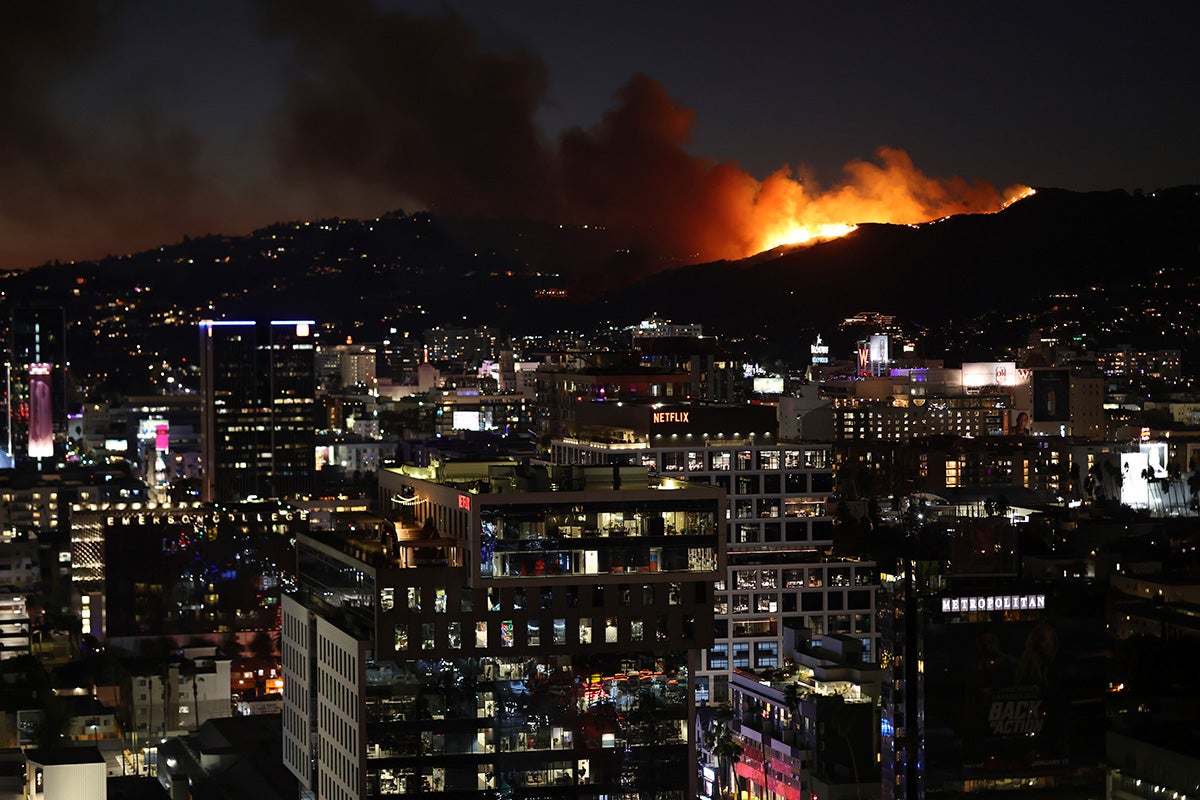
Opinion
Climate change isn’t India’s fault, but it is India’s responsibility
In late May, I woke up at 6 a.m., hoping to skip the long queue of voters in the last phase of India’s election. The sun was already blazing, and everything it touched reflected a blinding white light. I looked at my phone: It was already 38 degrees Celsius (100 degrees Fahrenheit).
A few years ago, such intense heat just after sunrise would have alarmed everyone. Now, as the Earth grows hotter, it was just an ordinary Saturday. Here in New Delhi, we are trapped between the scorching sun above and the heat radiating from the concrete below. Our water purifiers melt and our air-conditioners explode. Our rubber slippers shrink if we forget them in the car. We can boil eggs in the sand.
This summer, New Delhi saw the highest temperature ever recorded in India: 52.3 Celsius (126 degrees Fahrenheit), not far below the Death Valley world record of 56.7 degrees Celsius (134 Fahrenheit). The trouble is, unlike the Mojave Desert, Delhi is home to 33 million people. Heat waves in India are inevitably followed by news of death, which comes word-of-mouth—someone who knew someone you knew. I heard from the lady who sells me vegetables that three of her neighbors had died from extreme heat. By May, when summer here peaks, heat deaths are all over social media and news reports.
But we don’t hear much about these deaths from the government, which has admitted to only 143 heat-related deaths since March 1. Yet in two days alone, Indian newspapers in a single state, Uttar Pradesh, reported a total of 365 deaths, including 33 poll workers. Not a single candidate—from either end of the political spectrum—acknowledged the heat wave.
Sign up for Harvard Public Health
Delivered to your inbox weekly.
The Indian government has consistently argued, correctly, that mitigating climate change is the responsibility of developed countries whose emissions created the crisis. India has contributed only 3.4 percent of cumulative global emissions since 1850, the start of the Industrial Revolution. But as the economy of the world’s most populous nation grows, the government must focus on its own responsibilities to the poorest and most vulnerable people—those hurt most by climate change—both inside and outside the country.
As much as 90 percent of India lies in extreme heat danger zones, and climate change is an important driver of urban inequality in many cities. In our megacities, asphalt and cement trap the heat, worsening water scarcity by preventing percolation of rainfall into the soil and depleting groundwater levels.
The extreme weather reinforces long-standing inequities of caste, class, and gender in marginalized communities. The poor starve for water and electricity during heat waves while luxury shopping malls are extravagantly lit and cooled through the night.
Outdoor workers—and the elderly, the sick, and the poor—suffered most in this year’s heat wave. Yet India, unlike some Middle Eastern countries, has no laws banning outdoor work when temperatures reach deadly levels. A recent analysis by a policy think tank of 37 of India’s regional heat action plans found them profoundly inadequate. The plans are opaque, underfunded, and built on weak legal foundations, the report argued, and they lack data about high-risk groups like construction workers, farmers, and slum residents.
To control the consequences of the climate crisis, India also needs to address glaring domestic inequities. Today, owning an air conditioner and a refrigerator is a matter of life and death—yet only 25 percent of Indians own an AC (though the number is growing), and about 37 percent own a refrigerator, according to the latest government data.
As we saw this summer, air conditioners are ineffective if they burst into flames from running incessantly in record ambient temperatures. India needs to rely on old-school solutions that mitigate climate risks: creating green spaces, upgrading urban infrastructure, painting rooftops white to reflect sunlight and cool homes, building rooftop catchment systems to collect water during heavy rains, and adding water meters to help the community avoid waste. Those solutions will help, but investing in safety nets like taxpayer-funded health care is more than ever the right answer.
And as India’s economy expands, so does its share of carbon dioxide emissions. By 2050, India’s total electricity demand from residential air conditioners alone will exceed total electricity consumption in all of Africa. India is moving from victim of climate injustice to perpetrator.
Image: A man carries a child, head covered with a towel to protect them from the heat, in Jammu, India on Sunday, June 2, 2024. (Channi Anand / AP Photo)



